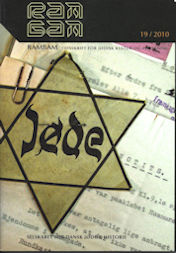Henri Nathansens familie
Resumé
Henri Nathansen's Family
In June 1944, author Henri Nathansen committed suicide while living as a refugee in Lund. He was a fine Danish author whose national play Inside the Walls is the most frequently performed at the Royal Danish Theatre. He also wrote a number of fine novels about Jews caught between the traditional Jewish world and modern-day challenges. His own family’s provincial life formed the background of several of his novels. Although his body of works calls for one, no biography exists of Henri Nathansen. This article describes Henri Nathansen’s family background from Randers, Denmark. The Jewish congregation in Randers held a strong position in
the 19th century, and was, by the middle of the century, the largest outside Copenhagen. Michael Nathan Minden and his wife Krese soon acquired a large family, of which many members lived in Randers. Among the descendants was Nathan, who married Betty Dessauer and had 17 children. One of these children was Hirsch Nathansen, who became a builder and built the synagogue in Randers. Another was Michael Nathansen, who became a soldier in the Pope’s army and later volunteered to fight in the war against the Germans and received the Order of the Dannebrog.
In the mid-19th century, Randers became the centre for large-scale horse dealing, and this was the start of the extraordinary tale of Isaac Nathansen, the son of Nathan Minden and Krese. Isaac was married to Rosa and became a merchant and horse expert in Randers. Isaac had a dramatic life and was confined in a madhouse several times. He wrote a number of articles and books and later became a Christian. The king more or less deported him to Brazil, where he claimed to have been appointed horse advisor to King Dom Pedro II. He returned home to his loyal wife Rosa and spent his final years in Randers. Isaac was undoubtedly of unsound mind at times, but he was also an energetic entrepreneur with many good ideas.
The integration and assimilation of the Jews into Danish society was strong, and by the end of the 19th century, the Jewish congregation in Randers was in reality disappearing. The story of actor Ludvig Nathansen, who had converted to Christianity, is illustrative. He came to a dramatic end, shooting his wife and then himself. World War II dealt a hard blow to the remaining Jews, and members of the Nathansen/Hartogsohn family were sent to the Theresienstadt concentration camp in 1943. There is little doubt that his family background was of great importance to Henri Nathansen. The article is based on published and unpublished sources, and the pictures are based in part on a family album with photos of the family members. Part of the material was acquired with the help of Louise and Inge Merete Nathansen.





